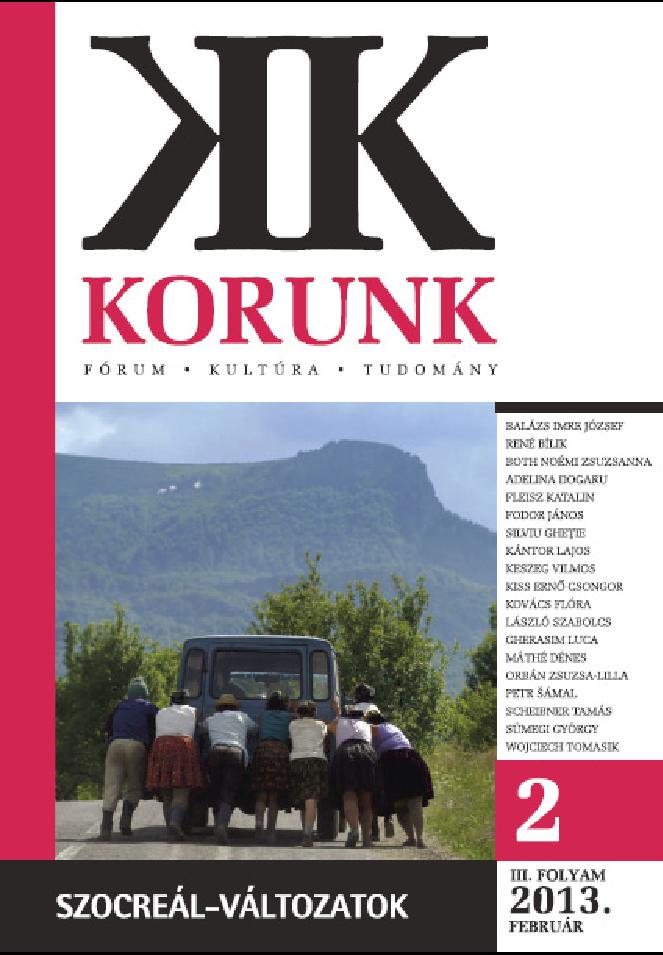
Betűportrék kifeszített pillanatokban
Hornyák József: Évek, õrangyalok. Szerelmeim, Pont, Bp., 2002.
More...We kindly inform you that, as long as the subject affiliation of our 300.000+ articles is in progress, you might get unsufficient or no results on your third level or second level search. In this case, please broaden your search criteria.

Hornyák József: Évek, õrangyalok. Szerelmeim, Pont, Bp., 2002.
More...

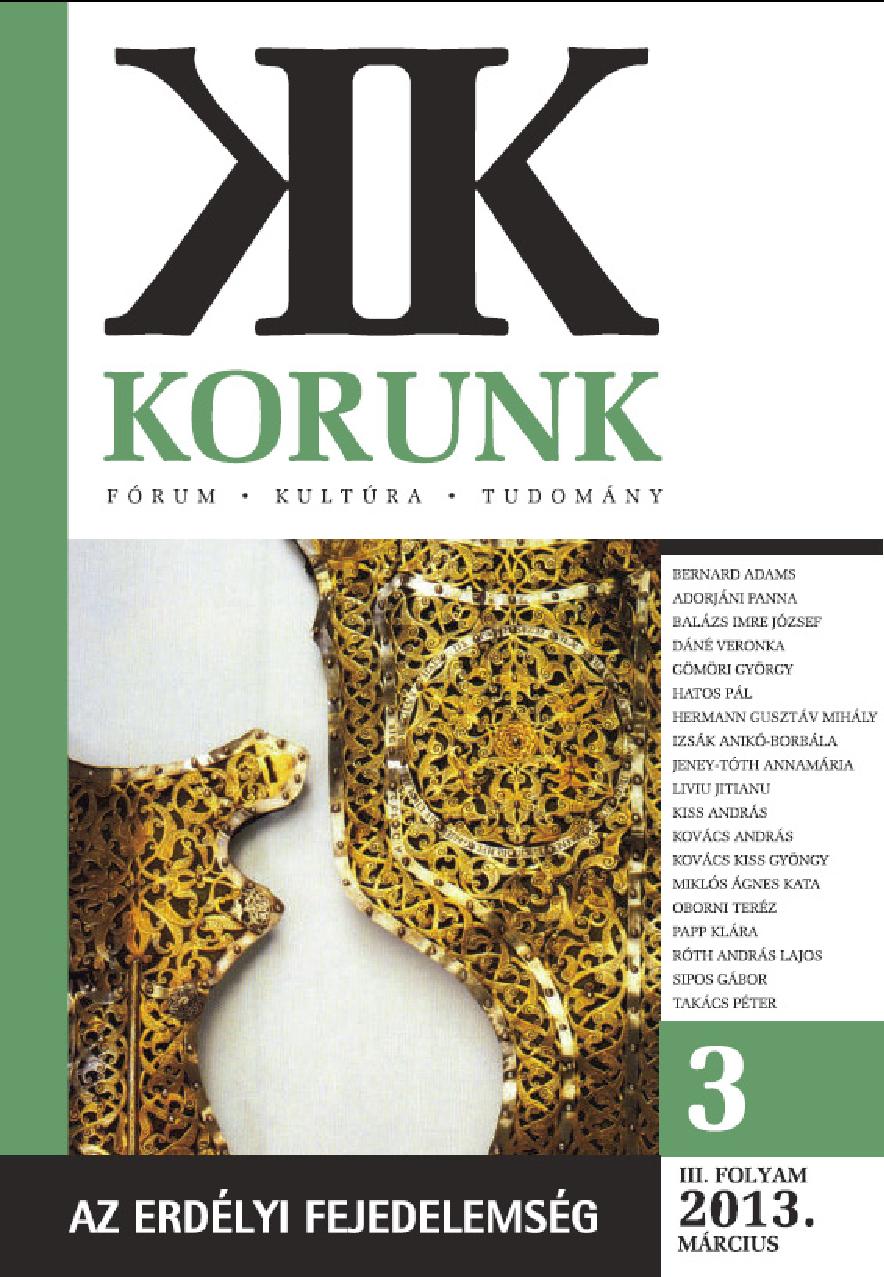
Lucian Boia: Capcanele istoriei – Elita intelectualã româneascã între 1930 ºi 1950
More...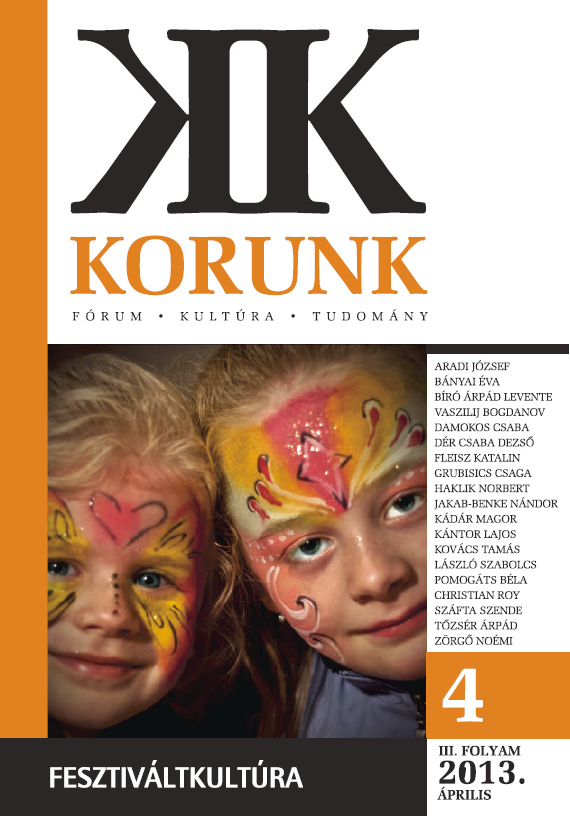
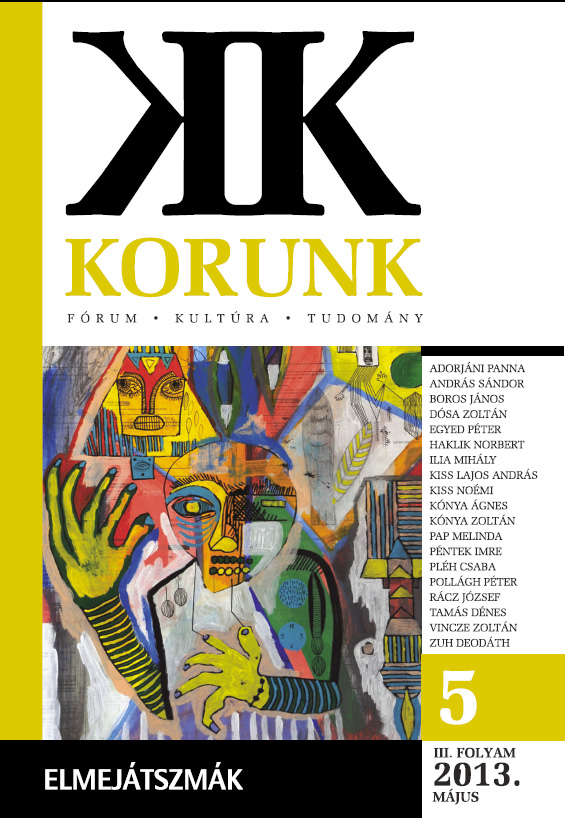
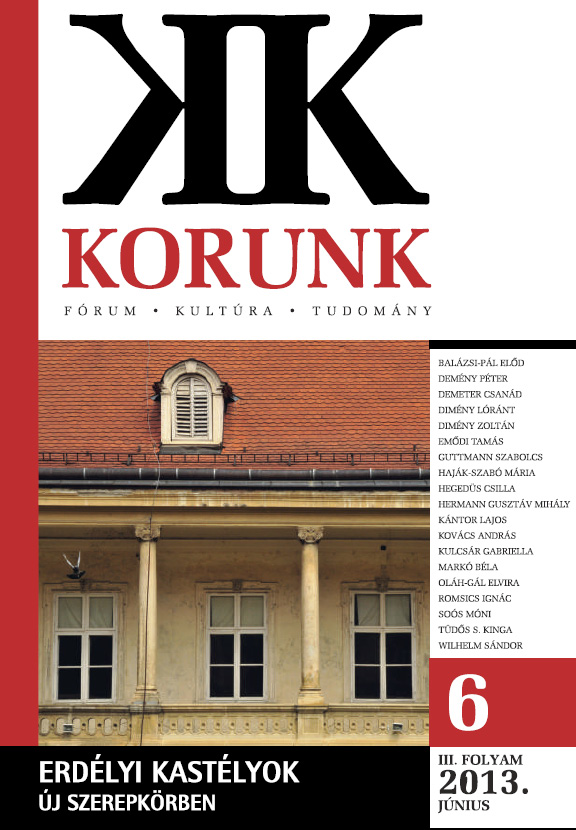
Grétsy László: A szavak ösvényein. Szavaink és szólásaink eredete, változásai, érdekességei Tinta Könyvkiadó, Bp., 2011. Az ékesszólás kiskönyvtára 16. Péter Mihály: A leplezõ nyelv. Álcázás és ámítás a nyelv használatában, Tinta Könyvkiadó, Bp., 2012. Az ékesszólás kiskönyvtára 22.
More...
Boris Kálnoky: Ahnenland, oder die Suche nach der Seele meiner Familie, Droemer Verlag, München, 2011.
More...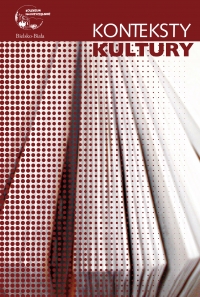
The article discusses a key issue in the writings of Imre Kertész (1929–2016), that is, contemplation on the effects of the concentration-camp trauma on the further life of survivors. In his books, the author touches upon problems faced by former inmates of concentration camps, often drawing on his own experience. The Nobel Prize winner reflects upon the former prisoners’ personalities, their problems in building relationships and their image of love and family distorted by war experiences. He also stresses the fact that many of them, unable to adapt to normal life, decided to commit suicide, while his escape from the trauma was just his writing.
More...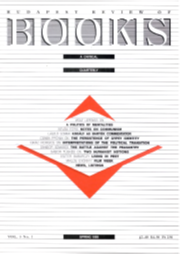
The review of: Lajos Hopp: Az “antemurale” és “conformitas” humanista eszméje a magyar-lengyel hagyományban (The Humanist Notions of Antemurale and Conformitas in Hungarian-Polish Tradition); Humanizmus és reformáció 19 (Humanism and Reformation Series 19), Budapest: Balassi Kiadó, 1992, 208 pp.
More...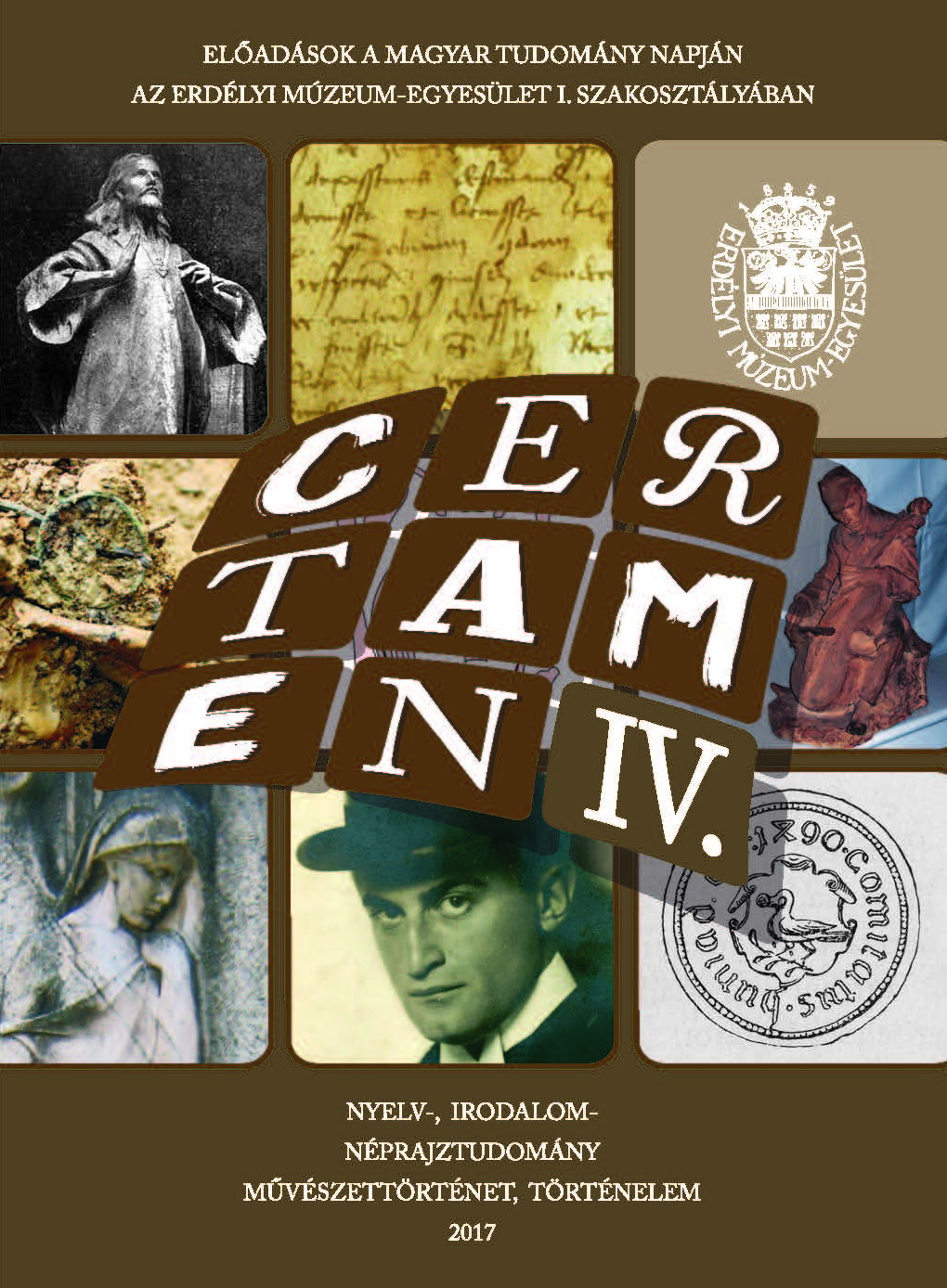
The study proposes the method of close-reading in order to define the core objective of the literary program formulated by Mihály Szatmárnémeti (1638–1689), a Reformed priest. As key elements in his activity, we could name the role of a prophet (he himself and his contemporaries identified him with this role, too) and his emphasis on promoting science. The method he chose for his objectives is presented using different examples from his oeuvre.
More...
The extremely successful Cambridge Apostle Ferenc Békássy stunned his British friends and colleagues when he returned to Hungary at the beginning of World War I to fight on the side of the Central Powers. This article is an attempt to reconsider Békássy’s reasons in light of historical and political events as well as in light of his poetic works. In particular, his long, dramatic poem “Adriatica”, which is also the title of a volume published in 1925 by Hogarth Press, reveals the importance Békássy placed upon the Adriatic region not simply for its geographic beauty but, more importantly, for its cultural and historical significance as a bridge between modernity and classical times, between East and West, North and South.
More...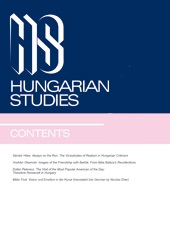
This study is devoted to the mediators - translators, philologists, publishers, writers - thanks to which was carried out the transfer of the Tragedy of the man of Imre Madách in the Germanic cultural sphere of 1862 to 1892. This period was particularly fruitful to two points of view. On the one hand, it saw the birth of seven translations, as well as a dozen reviews and reviews. Those published between 1888 and 1892 were intended to prepare the public for the upcoming appearance of Tragedy on German stages. On the other hand, many personalities for the German-speaking intelligentsia have made eulogistic statements about the Hungarian drama, while others have even recaptured this foreign masterpiece by drawing inspiration from him.
More...
Travel writing has enjoyed continuous success since the Renaissance, and has been an important factor in shaping perceptions of individual and group identities. Especially during the second half of the eighteenth century and throughout the nineteenth century travelogues constituted an influential part of the discourse on culture, and helped, through their descriptions of the foreign and a reaffirmation of what is “us”, establish the ideology of nationalism. Works by British authors such as William Wordsworth and the travel writings of Hungarian poet Sándor Petõfi and politician, essayist, and novelist József Eötvös offer examples of different strategies of using landscape as means of affirming contours of national identity.
More...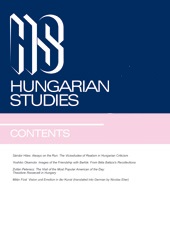
The historical legacy of the Austro-Hungarian Monarchy remains a subject of considerable debate and particular significance in an increasingly unified Europe. Given that political unification has by no means led to any widespread consensus concerning interpretations of the half-century of European history preceding the outbreak of World War I, it may be worthwhile to consider how the memory of this geographically large and nationally and linguistically diverse state has shifted in different historical periods. This article seeks to further an understanding of the contentious legacy of the Dual Monarchy through discussion of examples from works by Hungarian authors, in particular Dezsõ Kosztolányi, Gyula Krúdy, and Sándor Márai.
More...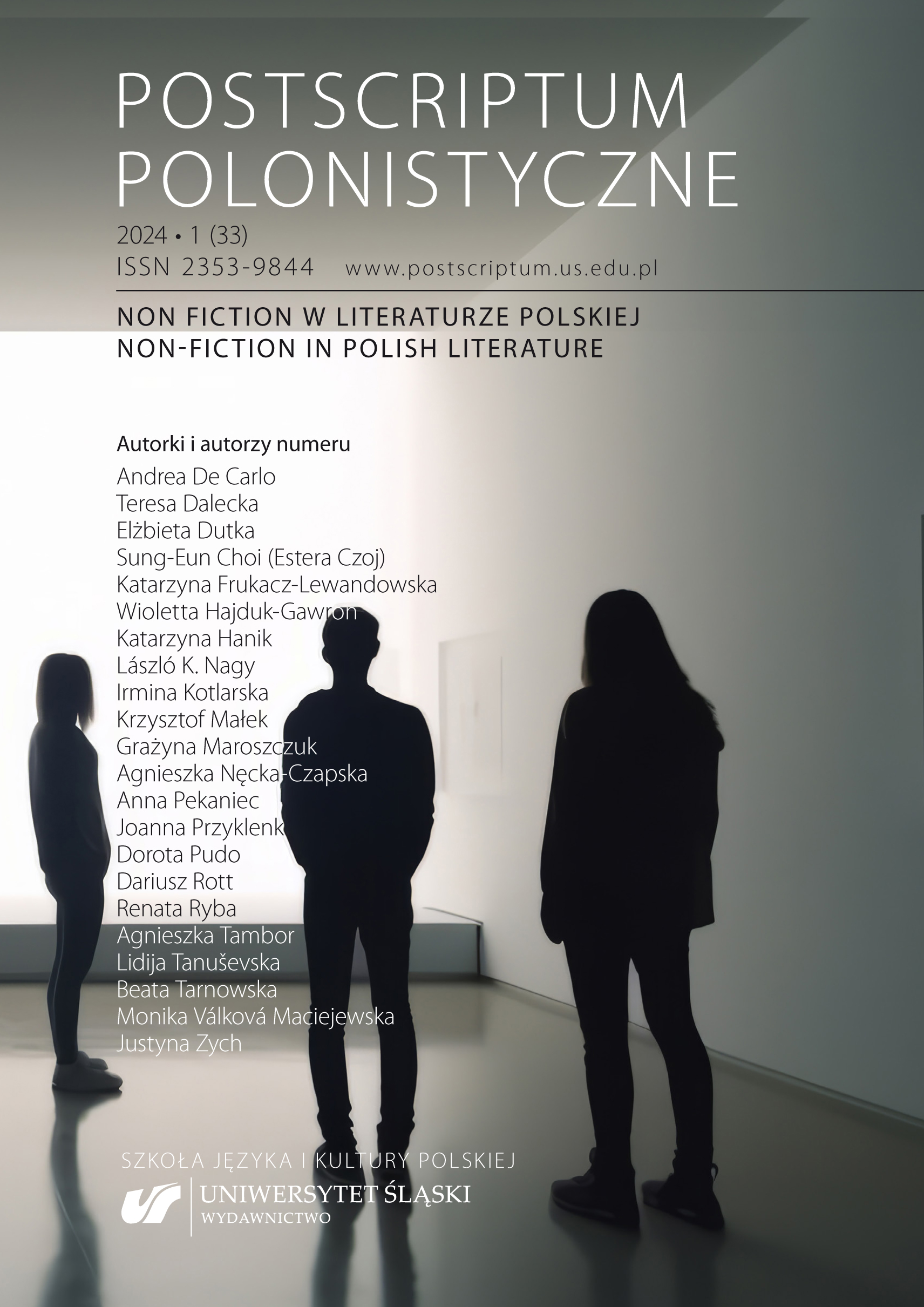
The article presents selected issues related to non-fiction literature in Hungary and the reception of some Polish works. In Hungarian culture, non-fiction literature has not gained its proper position to this day and, in a sense, it is considered a marginal work that does not have a permanent place in the national canon. It is consistently omitted in new historical and literary studies and there is a lack of continuity in the presentation of this achievement. This genre gained some notoriety and popularity in the 1930s thanks to the sociographic trend of the Hungarian prose represented by Gyula Illyés. However, since the second half of the 20th century, for example, the father of a Hungarian reportage, Árpád Pásztor, has belonged to the circle of forgotten writers, although at the beginning of the 20th century, as a correspondent of capital magazines, he sent reports from various countries of the world. Literary scholars have also forgotten about György Moldov, who died in 2022, and was considered the most famous and popular author of non-fiction literature during the period of real socialism. Many outstanding Polish non-fiction texts, e.g. Ryszard Kapuściński’s, were able to fill a certain gap in the Hungarian culture thanks to Hungarian Polish translators involved in Polish culture. The most interesting non-fiction titles from the point of view of the Hungarian culture recently include books by Andrzej Stasiuk, Ziemowit Szczerek and Krzysztof Varga.
More...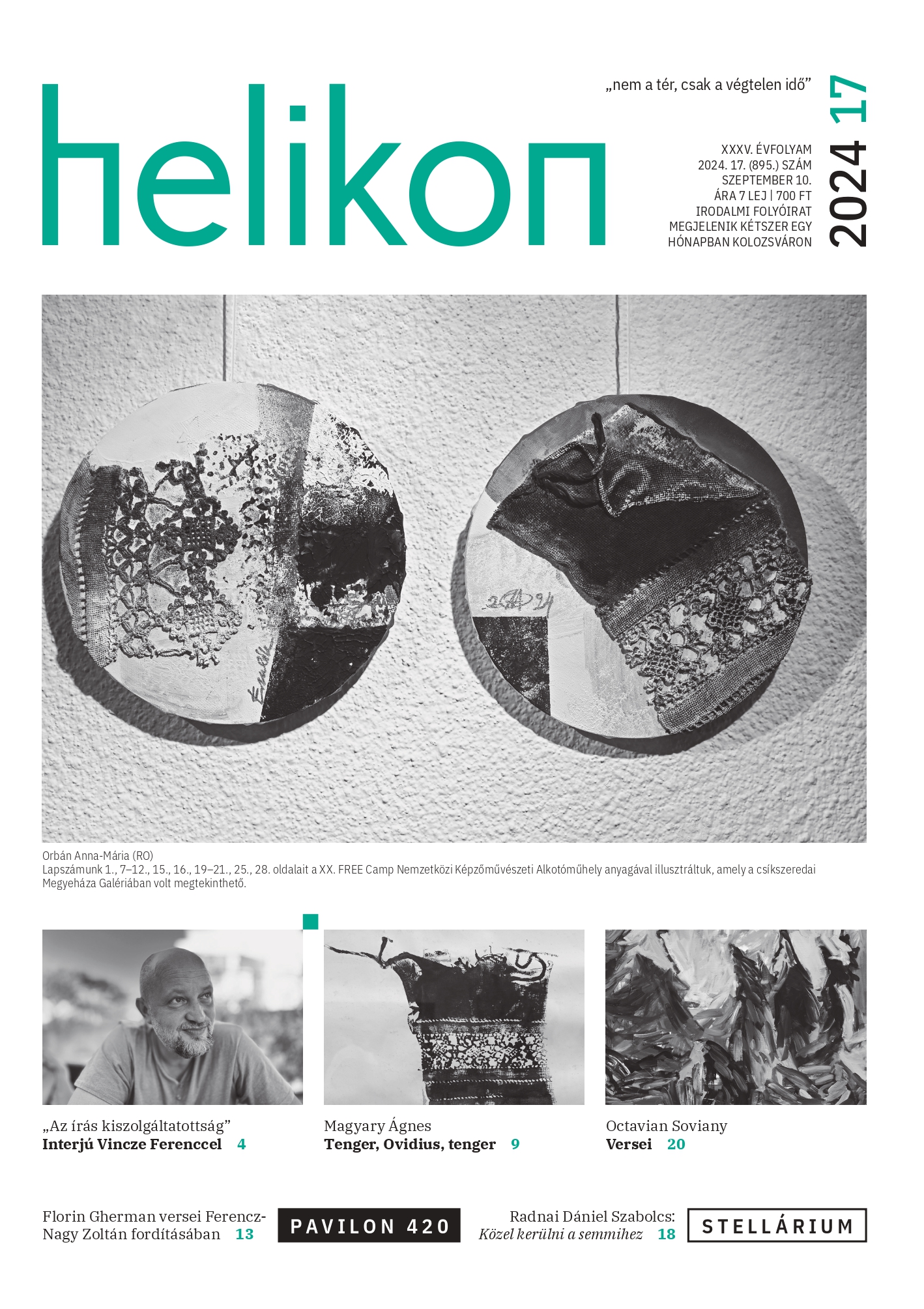
Zoltán Ferencz-Nagy's interview with Ferenc Vincze
More...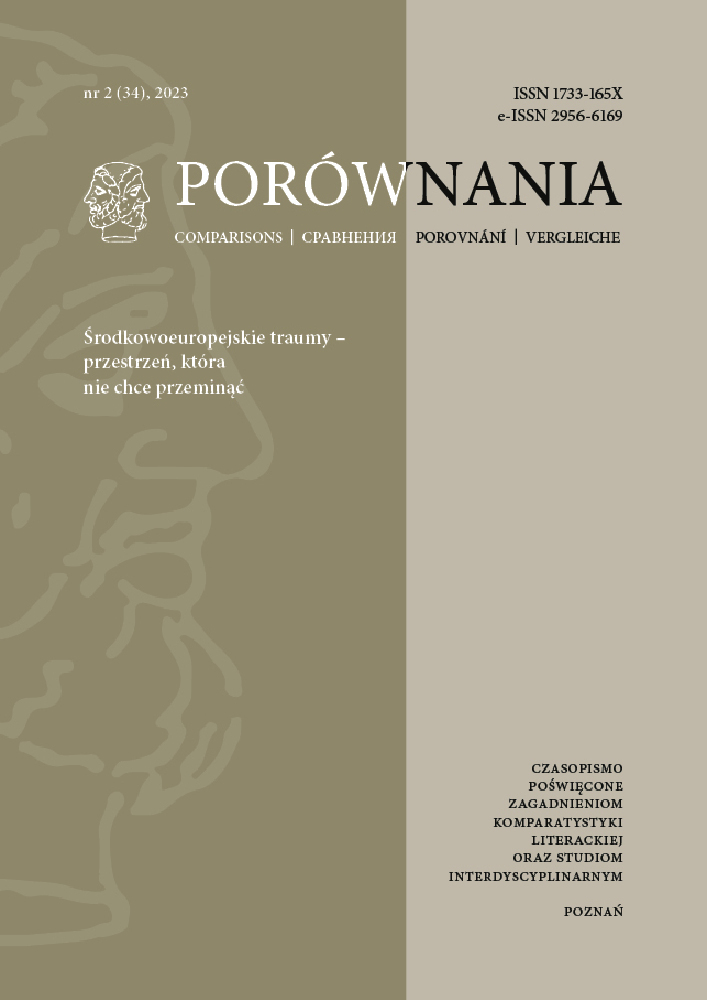
The article deals with the subject of the Holocaust in Hungarian literature between 1949 and 1953, and in particular with the writing strategies used by the authors to describe a phenomenon that was silenced and removed from public debate. During the post-war period, when the Communists were in power in Hungary, it was forbidden to write about the war and especially about the Holocaust of the Jews; moreover, all literary texts had to be approved by the censors. Despite the strict restrictions, Hungarian writers managed to smuggle the forbidden topic into their novels. In this article, I discuss the prose of József Debreczeni, István Kamjén, and Ferenc Karinthy against the background of social and historical phenomena in Hungary.
More...
In the case of deep trauma, literature is often unable to speak. In the Hungarian literature of Vojvodina, the general silence concerning the changes of empire and the reprisals describes the traumatic experience as an impulse that is impossible to put into a narrative. Nándor Burány’s book-length trauma novel, Összeroppanás (Implosion), published in 1968, looked back on the events from a quarter of a century later and for the first time thematised the task of processing transgenerational trauma. The novel’s distinctive feature is that it introduces the concept of trauma itself by asking questions about the identification of the time of the traumatic rupture. The real subject of his poetics is the way trauma works and its ineffable nature. The double vision so characteristic of trauma stories becomes here an important structural figure. In the moody world of trauma-induced thinking, the necessity and impossibility of speech at once torments the central figure of the novel. The novel is set in a space of cumulative trauma and processes trauma as a social construction based on lived experience. It also makes the point that trauma in this space cannot be located in a single inherent violent past event, but rather in a series of dates and events.
More...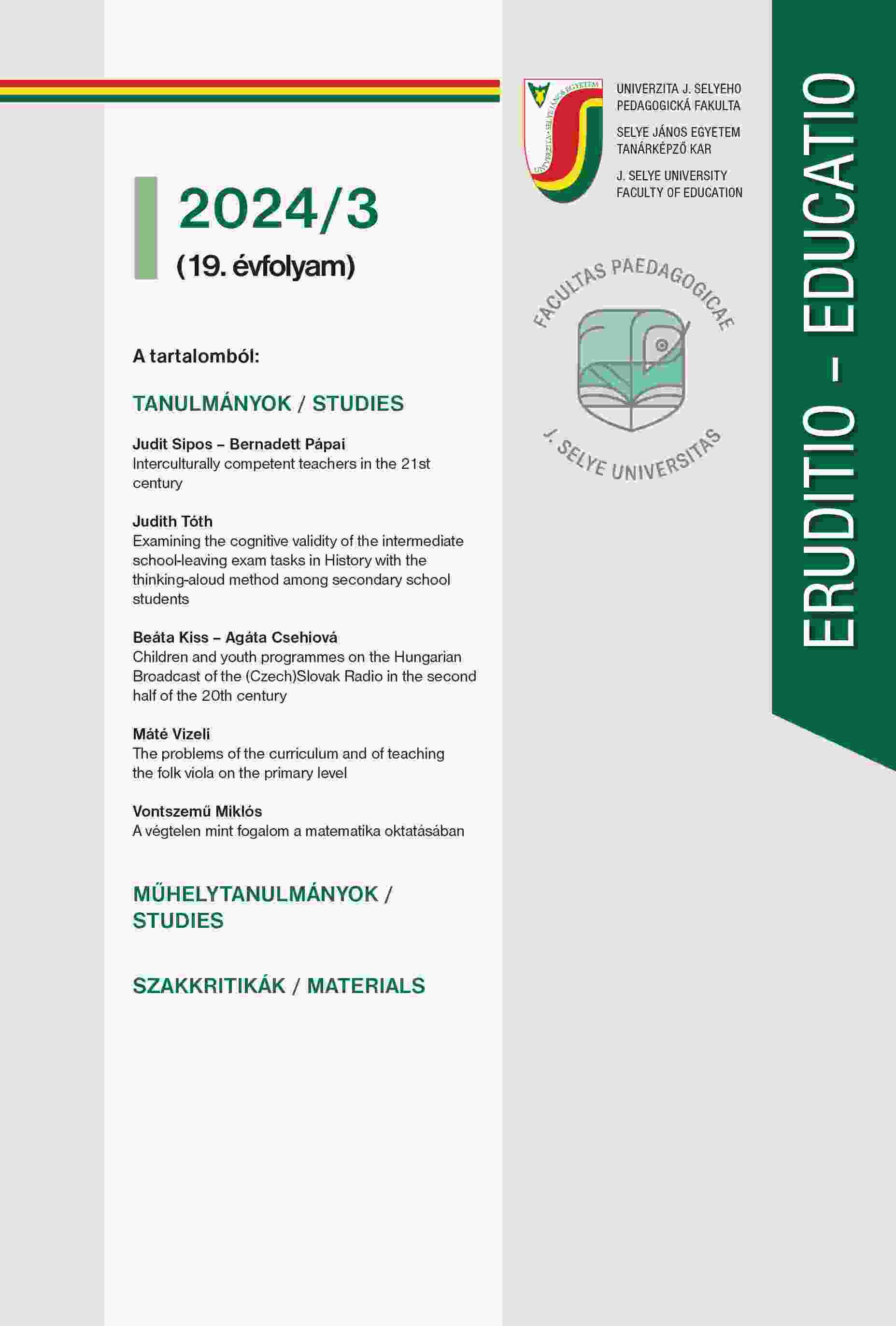
The paper interprets Tibor Déry’s 1956 short story Love as a story of relearning emo¬tions. It examines the moments in the narrative of the text that reveal the continuous change in the narrator’s perception of B. In the course of the story, B. gradually re¬gains control over his senses, and in the last section of the short story, the reader follows the protagonist’s attempt to reactivate his feelings for his long-seen wife. We argue that there is a tension between the experience of emotions and their inexpress¬ibility. From this point of view, the short story does not give an optimistic picture of the future prospects of B. and his wife. Our approach can be considered unusual, since over the past decades interpreters have primarily emphasized the public-performative function of Love, with less attention paid to the sophisticated workings of the text’s narrative.
More...